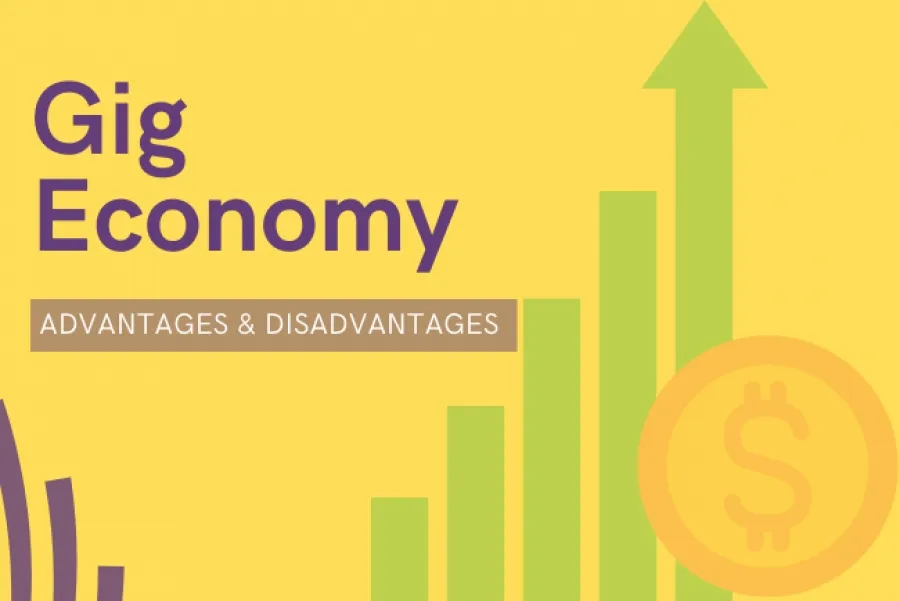In the ever-evolving landscape of freelancing and the gig economy, Fiverr has carved out a niche for itself by connecting businesses with a vast pool of freelance talent. However, as freelancers and businesses alike seek more options, it's essential to explore alternative platforms that can cater to different needs and preferences. In this blog post, we will dive deep into Fiverr’s business model and then venture out to discover some exciting alternatives that can offer unique benefits for both freelancers and clients.
Understanding Fiverr and Its Business Model

Fiverr is an online marketplace designed for freelancers and clients to connect effortlessly. Founded in 2010, it popularized the concept of "gig" work, which allows individuals to offer their services for a fixed price starting at just $5, hence the name. But there's so much more than just that initial price!
How Fiverr Works:
- Service Categories: Fiverr offers a diverse range of categories such as graphic design, writing, programming, marketing, and much more.
- Seller Tiers: Freelancers (sellers) can classify themselves into different tiers—New Seller, Level One, Level Two, and Top Rated—based on their performance and reviews, which can help them attract more clients.
- Buyer Requests: Clients can submit specific job requests, allowing freelancers to bid on work they are interested in, enhancing interaction opportunities.
Revenue Model: Fiverr’s business model revolves around transaction fees. When a freelancer earns money from a gig, Fiverr takes a percentage (typically 20%) as a commission. This structure motivates Fiverr to actively promote its platform and improve its services, benefiting both freelancers and clients.
Additionally, Fiverr offers features like Fiverr Pro, where skilled professionals can showcase verified portfolios, attracting high-budget clients. This multi-tier approach creates a dynamic environment for both freelancers looking to grow and businesses seeking quality work.
Also Read This: How to Redeem Coupon for Fiverr
The Rise of the Gig Economy

The gig economy has transformed the way we work, allowing people to engage in short-term tasks, often through digital platforms. But what exactly has fueled this revolution? Well, there are a few factors at play here.
- Technological Advances: The rise of the internet and mobile technology has made it incredibly easy for freelancers and clients to connect. Platforms like Fiverr provide a marketplace where services can be offered and accessed at the click of a button.
- Changing Workforce Dynamics: Many seek flexible working conditions that traditional 9-to-5 jobs don’t provide. The gig economy caters to those who want to balance personal commitments while earning an income.
- Pursuit of Passion: More people are choosing to turn their hobbies or skills into a side hustle. This allows them to work on projects they’re passionate about and often results in a higher job satisfaction compared to conventional roles.
As a result, more individuals are opting out of traditional employment in favor of freelancing, gig work, or consulting. According to a study by McKinsey, over 30% of the workforce in major economies could be involved in some form of the gig economy. It’s evident that this shift is not just a trend, but rather part of a broader evolution in how our society views work.
Also Read This: I Can’t Find My Gig on Fiverr: Troubleshooting Tips and Solutions
Top Companies Like Fiverr

If you’re looking to explore alternatives to Fiverr in the gig economy, you’re not alone! Thankfully, there is a plethora of platforms available, each catering to different niches or offering unique features. Let’s take a closer look at some of the top contenders:
| Company | Key Features | Best For |
|---|---|---|
| Upwork | Wide range of skills, hourly and fixed-price projects | Professionals and businesses looking for long-term relationships |
| Freelancer | Bidding system, project contests | Individuals who thrive on competition and client engagement |
| Guru | Flexible payment terms, workroom feature | Collaborators needing a streamlined project workflow |
| 99designs | Design contests, expert feedback | Businesses specifically seeking design work |
These platforms come with their unique advantages and community features, so it’s worth exploring a few to see which suits your style and needs the best. Whether you're a freelancer looking to expand your client base or a business seeking talent, the gig economy has plenty of opportunities waiting for you! So, what are you waiting for? Dive in and discover what these platforms have to offer!
Also Read This: Exploring the Flat-Rate CPA for Fiverr Affiliates
Comparing Features and Services
When diving into the world of freelancing platforms, it’s essential to understand what each offers. While platforms like Fiverr are popular, you might find alternatives that better suit your needs. Let’s break down some key features and services to compare.
- User Experience: The overall ease of navigation. Platforms like Upwork and Freelancer have extensive filters, while others like PeoplePerHour keep it simple.
- Payment Structure: Most platforms offer various payment methods, but their fee structures differ. For instance, Fiverr takes a 20% cut from each transaction, while Upwork has varying fees based on your earnings with a client.
- Project Types: Some platforms cater specifically to certain types of services. For example, 99designs focuses on design projects, while Toptal specializes in tech and finance-related services.
- Customer Support: Reliable support is crucial, especially if issues arise. Platforms like Guru are known for their responsive customer service, while others can be harder to reach.
- Community and Networking: Some platforms, like FlexJobs, foster community engagement through forums and networking options. This can be beneficial for freelancers looking to connect and collaborate.
By comparing these features and services, you’ll gain insight into what platform aligns best with your freelance goals.
Also Read This: How to Change Delivery Time on Fiverr
How to Choose the Right Platform for Your Needs
With so many freelancing platforms available today, how do you choose the right one? It can be a bit overwhelming, but don't worry! Here are some tips to simplify the selection process.
- Identify Your Skills: Are you a writer, designer, or programmer? Understand what services you want to offer. Different platforms cater to specific skills, so knowing yours can narrow down the options.
- Consider Your Experience Level: New to freelancing? Platforms that cater to beginners, like Fiverr, might be ideal. If you're more experienced, look for platforms offering higher-paying projects.
- Evaluate Your Budget: Some platforms charge membership fees or take significant commissions. Assess your budget to determine which platform is financially feasible for you.
- Check Reviews and Ratings: What are other freelancers saying? Research reviews and testimonials to gauge user satisfaction and platform reliability.
- Test Multiple Platforms: If you're unsure, there's no harm in trying a few. Set up profiles on multiple platforms to see which feels most intuitive and yields the best results.
By considering these factors carefully, you’ll be better equipped to choose a freelancing platform that meets your unique needs and helps you thrive in the gig economy!
Exploring Companies Like Fiverr: Alternatives for Freelancing and Gig Economy
The rise of the gig economy has transformed the way people work, offering flexibility and independence through platforms like Fiverr. However, there are numerous other alternatives that freelancers can explore to find work or hire talent. Here, we’ll delve into some of the leading companies similar to Fiverr, providing an overview of their unique offerings.
Here are some popular Fiverr alternatives:
- Upwork: A robust platform that connects freelancers with businesses. Upwork supports a wide range of categories including writing, design, programming, and marketing.
- Freelancer: Features a contest option allowing clients to post projects and receive bids from freelancers worldwide. Very versatile for diverse job types.
- Guru: Offers a user-friendly interface and allows freelancers to showcase their portfolios effectively. Providers can also set up agreements for specific projects.
- PeoplePerHour: Mostly serves clients in the UK and Europe, focusing on hourly work. It includes a unique workstream feature for managing projects.
- 99designs: Tailored specifically for designers, this platform allows users to launch design contests to receive multiple creative proposals.
| Platform | Best For | Key Feature |
|---|---|---|
| Upwork | Full-time freelancers | Wide project variety |
| Freelancer | Contest-based projects | Global reach |
| Guru | Professional services | Work agreement options |
| PeoplePerHour | Local clients | Effective project management |
| 99designs | Design work | Design contests |
In conclusion, while Fiverr is a major player in the freelancing and gig economy, exploring these alternatives can provide freelancers with a variety of opportunities tailored to their specific skills and needs, ultimately broadening their chances for success.



